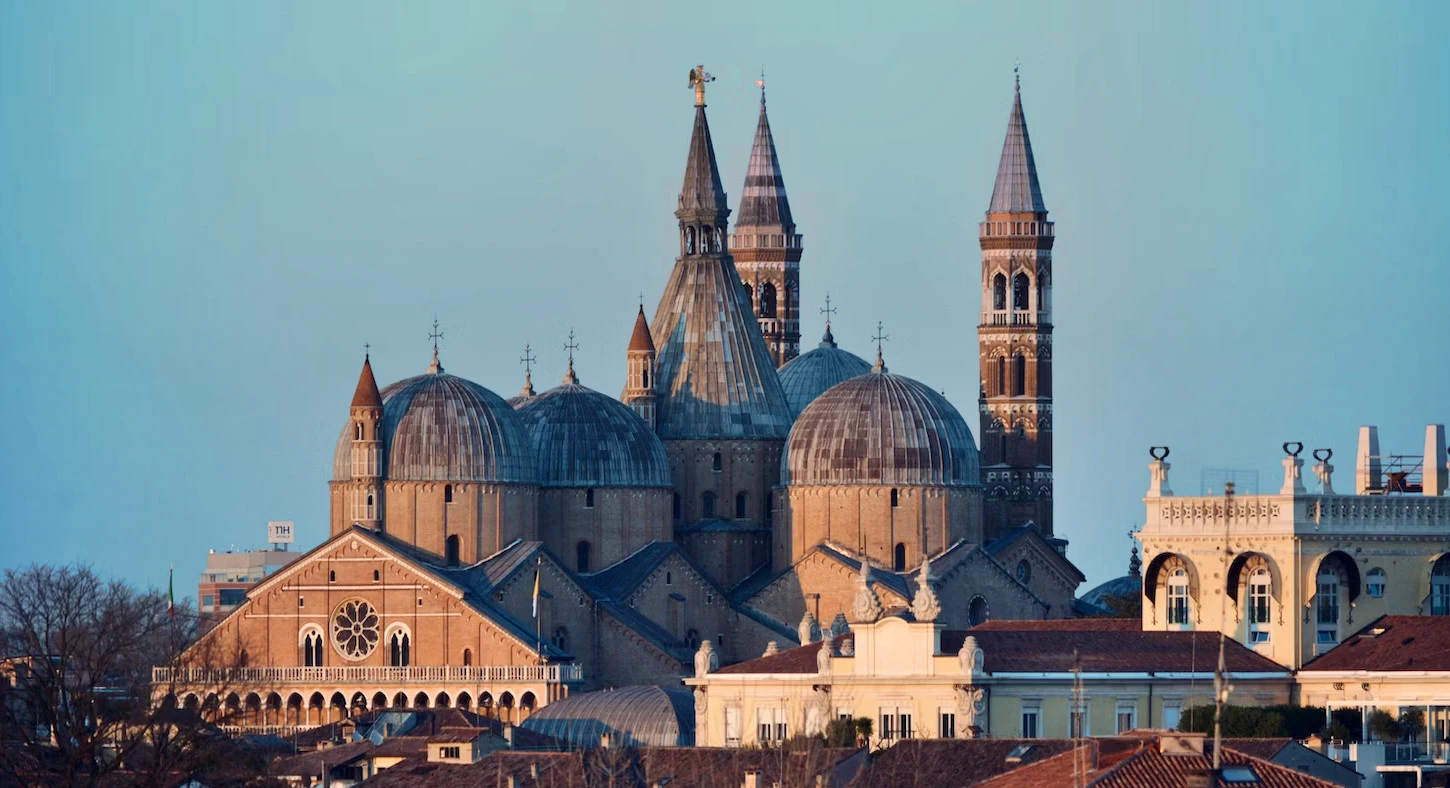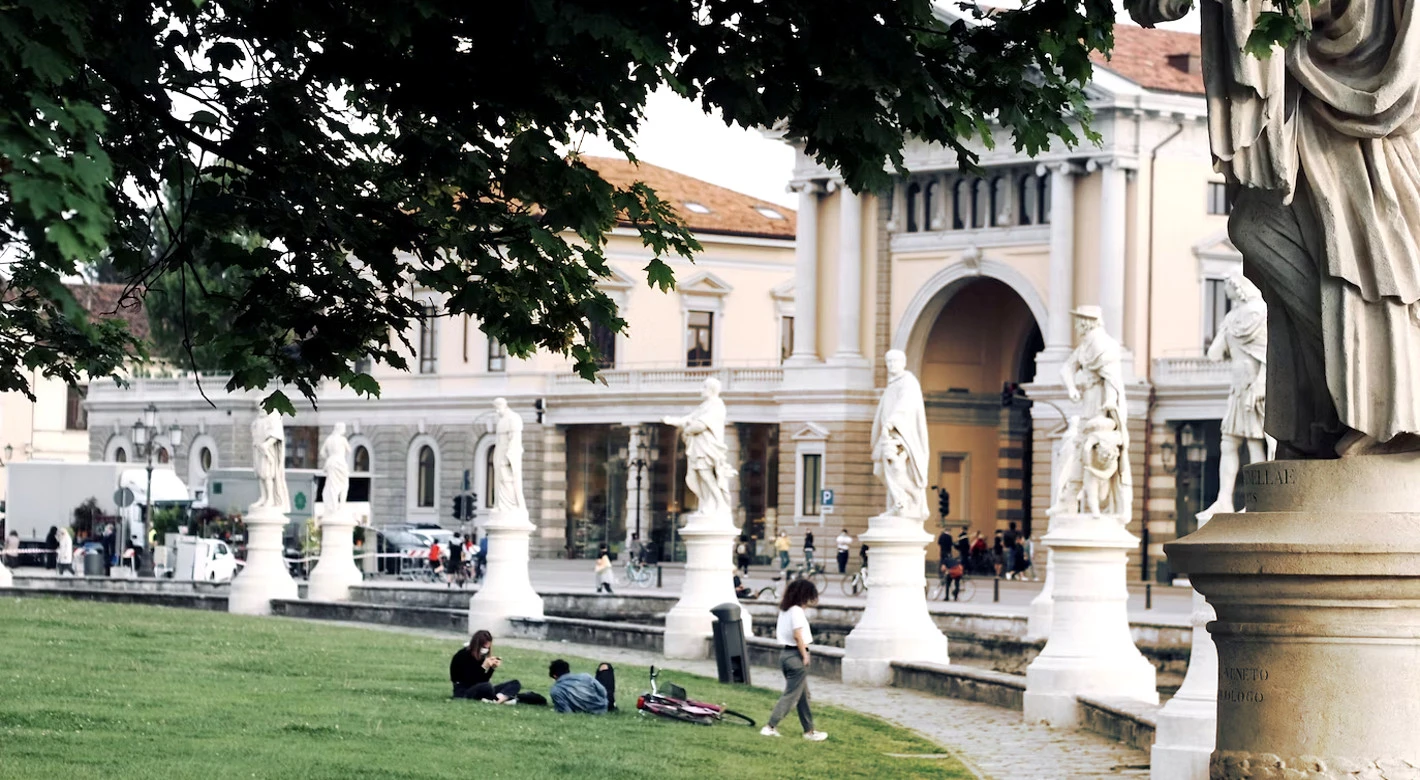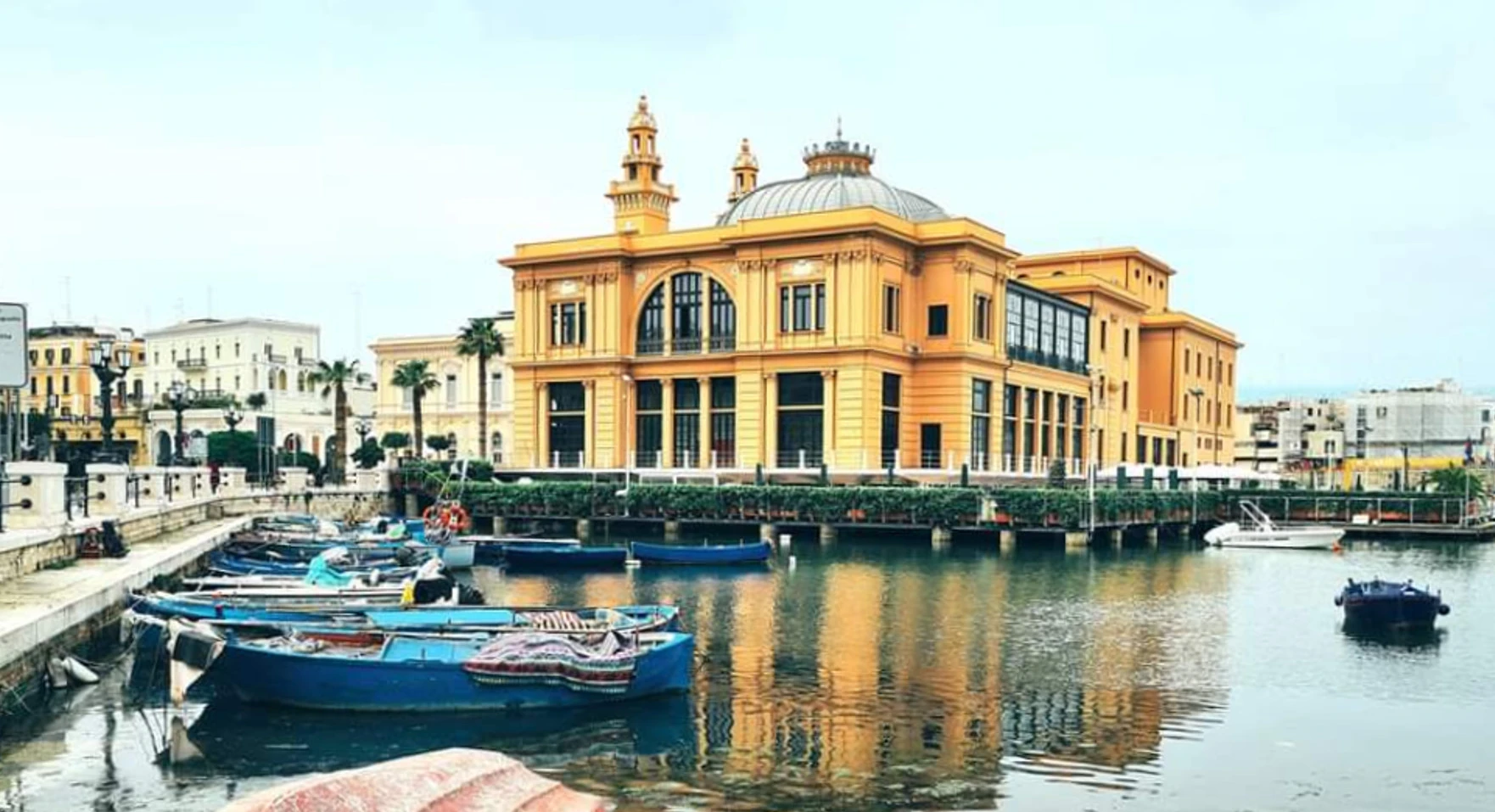Living in Padua
Padua is a city and commune in the Veneto region, northern Italy, on the river Bacchiglione, west of Venice.It is the capital of the province of Padua and the economic and communications hub of the area.
It is one of the oldest cities in Italy, with a history dating back to the Roman times.
It was the birthplace of the Roman historian Livy and the poet Dante, and the resting place of the saint and doctor of the church, Anthony of Padua.
Living in Padua as an expat can be both enjoyable and stimulating.
You can experience the charm and beauty of a historic and artistic city that offers a lot of culture and education, but also the convenience and dynamism of a modern and lively urban center.
Padua is the second-largest city in the Veneto region, after Venice, and the fifth-largest in northern Italy.
It has about 214,000 inhabitants, of which 65,000 are students at the University of Padua, the second-oldest in Italy and one of the most prestigious in Europe.
Padua is a UNESCO World Heritage Site and a popular tourist destination.
It is known for its landmarks, such as the Scrovegni Chapel, the Basilica of St.
Anthony, the Palazzo della Ragione and the Prato della Valle.
It has a GDP of about €22 billion ($27 billion), making it the 15th richest city in Italy and one of the most productive and innovative in Europe.
Search for:
What is Padua like?
Padua is a cultural and academic city, with a rich and diverse heritage.It is home to people from different backgrounds, traditions and languages, who have contributed to the city’s identity and character.
Padua is also a cultural and academic hub, with a long and illustrious history and legacy.
It hosts many museums, galleries, churches, palaces and events, covering various fields of interest, such as art, science, literature, philosophy, religion, law and medicine.
Some of the most famous cultural attractions in Padua are the Botanical Garden, the oldest in the world, the Astronomical Observatory, the oldest in the world still in operation, the Cappella degli Scrovegni, with the masterpiece frescoes by Giotto, the Basilica of St.
Anthony, with the relics of the saint and the sculptures by Donatello, and the University of Padua, with its historic buildings and famous alumni, such as Galileo, Copernicus, Vesalius and Petrarch.
Climate
Living in Padua means experiencing a humid subtropical climate, with warm summers and cold winters.In the summer, it’s hot and sunny, and you can enjoy the countryside and the hills.
In the winter, it’s cold and foggy, and you can admire the snow and the mountains.
The spring and the autumn are mild and pleasant, with some rain and some sun.
You can see the flowers and the fruits, and enjoy the festivals and the events.
Padua is not prone to flooding, but it can suffer from air pollution, especially in the autumn and the winter, due to the high concentration of traffic and industries.
To cope with this problem, the city has implemented various measures, such as limiting the car access, promoting the public transportation, and encouraging the bike use.
Economy
Padua is an industrial and commercial city, and one of the most dynamic and innovative in Italy.It has a diversified and competitive economy, based on sectors such as manufacturing, engineering, biotechnology, pharmaceuticals, agriculture, and services.
It is also a strategic and logistic hub, with a well-developed transport network, including a high-speed railway, a motorway, and an airport, connecting it to other major Italian and European cities, such as Milan, Rome, Munich, and Paris.
However, Padua also faces some economic challenges, such as the impact of the global crisis, the environmental sustainability, the social inclusion, and the digital transformation.
The city authorities have implemented various policies and initiatives to address these issues, such as supporting the local enterprises and startups, promoting the green economy, enhancing the social welfare, and investing in the digital infrastructure.
Education
Padua is an academic and scientific city, with a large and diverse student population.It has one of the oldest and most prestigious universities in Italy and Europe, the University of Padua, founded in 1222, offering a wide range of courses and degrees, from humanities and arts to science and medicine.
Some of the most famous and renowned academic institutions in Padua are the Botanical Garden, the oldest in the world, the Astronomical Observatory, the oldest in the world still in operation, the Scuola Galileiana di Studi Superiori, an elite school for excellence, and the Human Rights Centre, a leading research and training centre.
The city also has many public and private schools, catering to the needs of local families and children.
Some of the most popular and reputable schools in Padua are the Liceo Classico Tito Livio, the Liceo Scientifico Galileo Galilei, the Istituto Tecnico Industriale E.
Fermi, and the Istituto Professionale per i Servizi Sociali.

Cost of living in Padua
The cost of living in Padua is moderate compared to other Italian cities.It is the seventh most expensive city in Italy, after Milan, Venice, Rome, Florence, Bologna and Turin.
A family of four estimated monthly costs are €3,052 without rent, and a single person estimated monthly costs are €1,768 without rent.
Rent in Padua is also reasonable, especially outside the city center.
For example, a one-bedroom apartment in the city center costs about €600 per month, while a three-bedroom apartment costs about €1,000 per month.
The prices of food, transportation, utilities, and entertainment are also lower than the national average.
Is Padua safe?
Padua is a relatively safe city for tourists and expats, with a moderate crime rate compared to other major cities in Italy and Europe.However, some precautions are recommended, especially in certain areas and situations.
The most common crimes in Padua are theft, robbery, fraud, and vandalism, which usually target urban and suburban areas, such as the railway station, the city center, the industrial zone, and the outskirts.
To avoid these risks, it is advisable to be vigilant and careful, to keep your valuables close and secure, to avoid suspicious or aggressive people, and to report any incident to the police.
Padua is also generally safe at night, but it is better to avoid walking alone in dark and isolated streets, and to stick to the well-lit and busy areas.
Pros and cons of life in Padua
| Pros | Cons |
|---|---|
| Historic and artistic city | Hot and humid city |
| Rich academic and scientific heritage | Expensive housing |
| Proximity to the Euganean Hills | Language and culture barriers |
| Excellent food and wine | Noisy and crowded |
| Good public transportation | Lack of diversity |
| Low cost of living | Low work and opportunities |
| High quality of healthcare | Bureaucratic and rigid system |
| Lively and diverse city | Less festive and cheerful atmosphere |
Advantages of Living in Padua
Overall, Padua is a historic and artistic city, with a rich academic and scientific heritage.You can explore its many attractions, such as churches, palaces, museums, and gardens, and immerse yourself in its history.
It is also a gastronomic city, with many local specialties and wines, such as bigoli, risi e bisi, fegato alla veneziana, and prosecco.
The city has a good public transportation system, which makes it easy to get around and to other parts of Italy and Europe by train and bus.
Not only that, but you can also enjoy its proximity to the Euganean Hills, where you can have scenic views and easy access to hiking and cycling opportunities.
Padua is a lively and diverse city, where you can meet people from different countries, cultures and backgrounds, who contribute to the city’s social and cultural life.
Italian is widely spoken here, but you can also find people who speak English, German, and other languages, which makes it easier for you to communicate and find work.
The city has a diversified and innovative economy, which offers you many opportunities for work and career development, especially in sectors such as manufacturing, biotechnology, pharmaceuticals, agriculture, and services.
Padua has a moderate cost of living, which makes it more affordable than other Italian cities, and a high quality of life, with excellent education, healthcare, and social services, which ensure your well-being and happiness.
Disadvantages of Living in Padua
Padua can be hot and humid to live in.You can face difficulties in finding affordable housing, especially in the city center, where the prices are high and the availability is low.
You can also encounter problems with the language and culture, as English is not widely spoken and the locals can be conservative and traditional.
The city can be noisy and crowded, with traffic and tourists, which can affect your health and environment.
Padua is not very diverse, and the expat community is small and scattered.
You can also have trouble finding work and opportunities, as the economy is not very stable and the competition is high, especially for foreigners.
Moreover, the city can have a bureaucratic and rigid system, which can be frustrating and annoying, especially for expats, who have to deal with a lot of paperwork and regulations.
In addition to that, compared to other parts of Italy, Padua can have a less festive and cheerful atmosphere, which can make it dull and boring for some people.

FAQs
What is Padua like for foreigners?
Padua is a historic and artistic city, with a rich academic and scientific heritage.It is the capital of the province of Padua, in the Veneto region, northern Italy, on the river Bacchiglione, west of Venice.
It is a great choice for expats who love history and culture.
Padua offers many attractions, such as churches, palaces, museums, and gardens, as well as a gastronomic food and wine culture.
Living in Padua as an expat can be both enjoyable and stimulating.
You can enjoy the benefits of a charming and beautiful city that offers a lot of culture and education, but also the convenience and dynamism of a modern and lively urban center.
What is Padua like for students?
Padua is an ideal destination for students who want to pursue their studies in Italy or abroad.The city has a long and distinguished academic tradition, as it hosts one of the oldest and most prestigious universities in Italy and Europe, the University of Padua, founded in 1222, offering a wide range of courses and degrees, from humanities and arts to science and medicine.
Some of the most famous and renowned academic institutions in Padua are the Botanical Garden, the oldest in the world, the Astronomical Observatory, the oldest in the world still in operation, the Scuola Galileiana di Studi Superiori, an elite school for excellence, and the Human Rights Centre, a leading research and training centre.
Studying in Padua means being part of a stimulating and enriching educational environment, a diverse and international student community, a lively and varied cultural scene, and a lot of opportunities for socializing and networking.
Padua is also a beautiful and artistic city, with many attractions, such as churches, palaces, museums, and gardens, as well as a gastronomic food and wine culture.
Padua is a city that blends history and innovation, tradition and diversity, culture and education, making it one of the best cities to move to as a student in Italy.
What is Padua like for women?
Padua is a city with a rich academic and scientific heritage, but also a diverse history of gender and sexuality.It is a city that has produced and hosted many influential women who have contributed to various fields, such as art, literature, medicine, and law.
Women in Padua can benefit from a stimulating and enriching environment, a high level of culture and education, and a strong sense of community and participation.
However, women in Padua also have to deal with some issues, such as wage gap, violence, and discrimination, that affect their rights and opportunities in society.
What is Padua like for LGBTQ people?
Padua is one of the most tolerant and inclusive cities in Italy to live as a LGBTQ+ person, as it has a active and diverse queer community, with many venues, events, and activities for all tastes and preferences.The city respects diversity and inclusion, and has a vibrant LGBTQ+ culture, with influential artists, writers, and activists who advocate for LGBTQ+ rights.
Padua is also a progressive and cosmopolitan city, that stands out from other Italian cities for its openness and modernity.
It has a legacy of hosting important LGBTQ+ events, such as the first Italian Transgender Day in 2005, the first Italian Bisexual Pride in 2015, and the first Italian Intersex Day in 2018.
Living in Padua as a LGBTQ+ person means enjoying a high quality of life, a supportive and friendly community, and a lot of opportunities for culture and education.
However, Padua is not a perfect city, and it still faces some issues and challenges related to gender and sexuality, such as discrimination, violence, and homophobia, that need constant work and awareness.
Is Padua a poor city?
Padua is a moderately rich city in Italy, with a GDP per capita of €29,000 ($35,000), which is close to the national average of €28,000 ($33,000).Padua has a diversified and innovative economy, based on sectors such as manufacturing, biotechnology, pharmaceuticals, agriculture, and services.
It is also a center for research and development, hosting several universities, colleges and institutes.
However, Padua also faces some social and economic challenges, such as unemployment, poverty, inequality, and environmental issues.
According to the latest data, the unemployment rate in Padua is 7.8%, slightly lower than the national average of 8.8%.
The poverty rate is 8.9%, which is close to the national average of 9.4%, but still affects about 19,000 people in the city.
Is Padua dirty?
Padua is a fairly clean city in Italy, with a good level of air quality, waste management, and water sanitation.Padua ranked 14th out of 104 Italian cities in the latest environmental survey by Legambiente and Ambiente Italia, which measures the quality of urban ecosystems.
Padua has implemented various measures to improve its environmental performance, such as limiting the car access, promoting the public transportation, encouraging the bike use, and supporting the green economy.
However, Padua also faces some environmental challenges, such as air pollution, noise pollution, and urban sprawl.
Is Padua walkable?
Padua is a fairly walkable city, especially in the historic center where most of the attractions are located.The public transport system is efficient and affordable, with buses, trams, and trains connecting different areas of the city and the region.
There are also bike-sharing services and bike lanes for cyclists.
The city has many cultural and artistic sights to explore on foot, such as the Scrovegni Chapel, the Palazzo della Ragione, the Basilica of Saint Anthony, and the Prato della Valle.
There are also several parks and gardens, such as the Botanical Garden, the oldest in the world, and the Parco Iris, a green oasis along the river.
Some challenges for walkers are the cobblestone streets, which can be slippery and uneven, and the traffic, which can be busy and noisy.
The city also has a ZTL (limited traffic zone) in the center, which restricts the access of cars and requires a permit.


